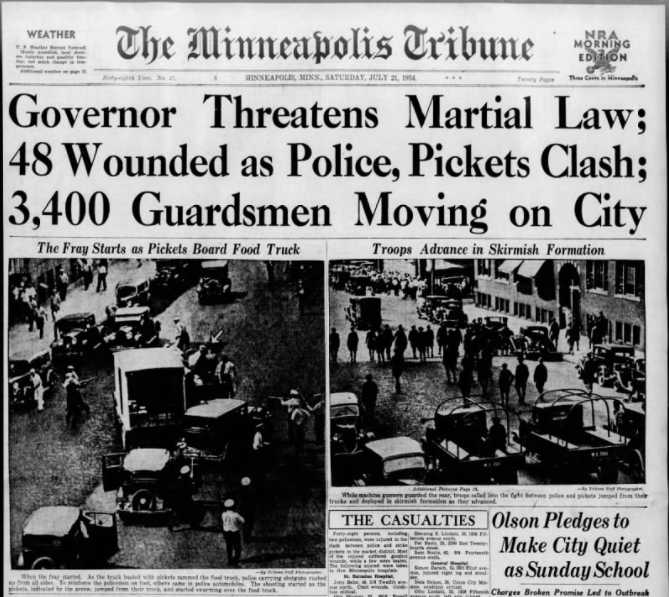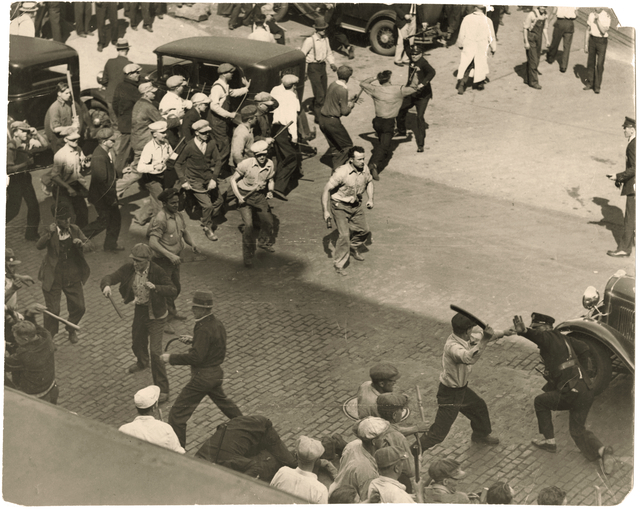On This Date In Twin Cities History - July 20, 1934

On this date in 1934, two people are killed and sixty-seven are injured in a clash between Minneapolis police and the truck drivers Union 574 during the Minneapolis “trucker’s strike”.
The strike grew from a walkout by Teamsters against most of the trucking companies operating in Minneapolis, the major distribution center for the Upper Midwest at the time.
It began on May 16, 1934 in the Market District (today’s Warehouse District). It was extraordinarily effective as it resulted in the stoppage of most of the commercial transport in the city, with the exception of certain farmers who were allowed to bring produce into town.
On Saturday, May 19, Minneapolis Police and private guards beat a number of strikers trying to prevent strikebreakers from unloading a truck. They also stopped several more strikers who were attempting to halt scab drivers from delivering newsprint to the city’s two major newspaper’s loading docks.
The situation intensified significantly on, May 22 when picketers drove both police and deputies from the market and the area around the union’s headquarters. Two of the several hundred deputized “special police”, C. Arthur Lyman and Peter Erath, were cornered and killed. In the following “general riot” another roughly two dozen special police, municipal police, and strikers were beaten or wounded.
The ensuing violence lasted for the next two months. Negotiations between the union & trade councils and the Minneapolis Chief of Police, Mike Johannes, were unsuccessful in bringing an end to the violence.
Things culminated on Friday, July 20, commonly referred to as “Bloody Friday”, when police fired upon strikers with shotguns, killing John Belor and Henry Ness and injuring 67 others.
Six days later, after employers refused to accept a federal mediator’s plan to end the strike, Governor Floyd B. Olson declared Minneapolis to be under martial law. Four-thousand National Guardsmen were mobilized to take control of the city’s market district essentially ending the violence. By August 22 the strike ended when a settlement was reached giving the union most of what it had demanded.


